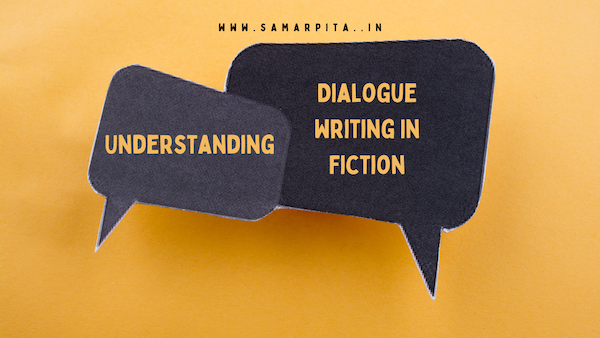A dialogue is the section in a story which shows us a conversation happening between two or more characters. There are two broad types of dialogues: inner and outer. The conversation that happens between two or more people is outer dialogue. Sometimes there are internal monologues where the character in the scene is talking to themselves.
Also Read: Crafting Authentic Dialogue: Expert Advice from a Manuscript Editor
Dialogues aren’t as tricky to write as they might seem. My favourite trick to share with my students is to remember that conversations like stories are part of real life. People in stories will talk exactly how people talk in real life.
Dialogues are the soul of any story. While the narration sets the ball rolling and characters spice it up, well-written dialogues take the story ahead. And not to forget, epic dialogues get quoted for years and decades.
Let’s not get ahead of ourselves and focus on writing epic dialogues just yet. The key to creating great work is to understand the basic and follow the rules. The creatives below about the three prerequisites of any good dialogue and must be followed every time you write a story.
Also Read: Breaking Down How To Write Dialogues In Fiction
6 Rules For Creating Great Dialogues
-
Punctuate Correctly
There is a typical manner in which dialogues are written. They are different for prose and drama, and should never be mixed. In drama, a lot of what is written is for the actor to understand and then act. In a story, every word is for your reader to read, interpret and even imagine.
All punctuation that are part of the dialogue go inside quotation marks. In prose, the flow of dialogues are in the paragraph flow and contain action tags as well. Both double and single quotation marks are used in Indian publications depending on what format the publisher follows usually. As a rule, double quotation mark is used in US English, and single quotation marks are used in UK English. In Indian books, either get used. Personally, I prefer double quotation marks as that leaves the single ones to denote aa quoted dialogue within an existing dialogue.
-
Use few(er) tags
Ending every dialogue with he said/she said ends up making the writing look cluttered and annoying the reader. If two people are talking, establish who is talking first and let the dialogue flow. Readers will also understand who is saying what based on personalities of the characters you have already established. Gestures and action tags also indicate who is talking in bigger groups. While dialogue tags are to be used where needed, as should action tags be, the idea is to use them sparingly and where needed. How does one know where these tags are needed and where they are not? By reading a lot and writing a lot. A writing instinct develops that helps your writing look smooth and experienced.
Also Read: Tips for Authentic and Engaging Writing
-
Cut the fillers
In real life, one might meet a friend and do boring small talk but a story needs to stay exciting and engrossing. Characters asking, “How are you?” and getting, “I am fine, thank you. What about you?” adds nothing to the story and to be honest, bored the reader. The fact that they greeted each other can be part of the narrative or skipped completely.
-
Maintain context
Keep with the flow of the story. Conversations need to make sense to the reader based on events of the past as explained and the characters that have been built in the story. Conversations from the future need to be indicated as such either clearly or in a subtle manner like in a new chapter or section.
-
Use the setting/environment
Include the surroundings in the dialogues. There can be no abrupt dialogues as if they are excerpts from some notes. Dialogues are meant to be part of the story and either add to what is about to follow or tell the reader what might have happened in the past. Weave in the surrounding, the room/place your characters are in.
Also Read: A Ready-Reckoner To Write Authentic and Relatable Personalities
-
Indulge readers with vital information
Dialogues are meant to not only break the monotony of the narration, but also to share with the readers important events from the plot or give a sneak peak at some character trait, perhaps. Each exchange happening between characters must share some vital information with the reader even if it’s subtle.
Every time a new person speaks, a new paragraph also begins. If one character’s dialogue is long and extends beyond one paragraph, then the closing quotation mark will be marked only once, at the end of the entire dialogue and not after every paragraph.
Also Read: Punctuation Magic: Making Your Writing Clear and Stylish
First published here.
***
If you are looking for an excellent manuscript editor, someone to create content for your business, or an expert to help build your personal or professional brand on social media, then look no further and connect with me at editor@samarpita.in I can be followed on instagram at @samarpita and on twitter at @samarpitadotin.
***********
Read my ebook WRITE. EDIT. PROMOTE. to learn the basics about becoming an author – from writing your own book, to editing your first draft, and to promoting your book yourself! You can also read my ebook How To Write A Story Effectively and learn some valuable lessons about how a story can go from average to extraordinary. This book is part 1 of the series.
In fiction, I have two short stories for children in an ebook called Bedtime Stories.

